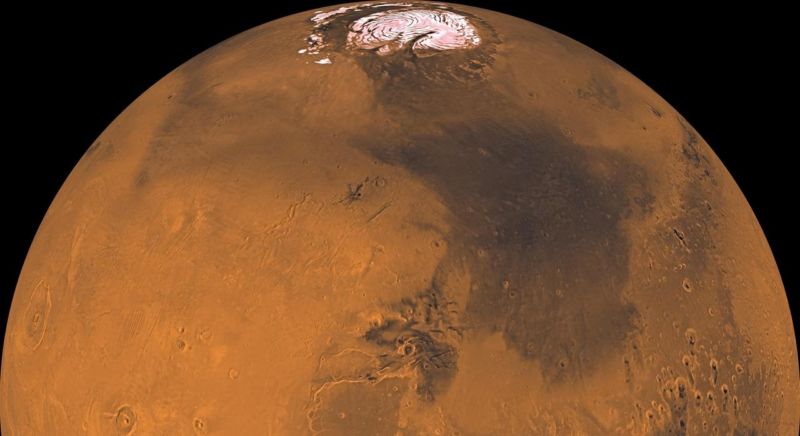NASA is starting to take its first steps toward opening a commercial pathway to Mars.
This week the space agency’s Jet Propulsion Laboratory issued a new solicitation to industry titled, “Exploring Mars Together: Commercial Services Studies.” This is a request for proposals from the US space industry to tell NASA how they would complete one of four private missions to Mars, including delivering small satellites into orbit or providing imaging services around the red planet.
“The Mars Exploration Program Draft Plan through the next two decades would utilize more frequent lower cost missions to achieve compelling science and exploration for a larger community,” the document states. “To realize the goals of the plan, government and US industry would partner to leverage current and emerging Earth and lunar products and commercial services to substantially lower the overall cost and accelerate leadership in deep space exploration.”
Design reference missions
NASA will pay proposers $200,000 for a study of one of the reference missions, or $300,000 for a maximum of two studies. The space agency said it intends to award “multiple” contract awards.
In its 496-page solicitation, NASA outlines four “design reference missions” that companies can bid on. Basically, the space agency is asking companies how they would go about fulfilling these tasks. Here are the four “reference” missions that companies can bid on:
- Smaller payload delivery and hosting: Carry and deliver Mars Exploration Program-provided payloads, including possible deployed cubesats, and operate in Mars orbit. Payload mass is up to 20 kg.
- Larger payload delivery and hosting: Carry and deliver to Mars orbit one or more separable spacecraft, and optionally provide services for one or more hosted payloads, for an aggregate customer mass of 1,250 kg.
- Electro-optical imaging services: Provide sensor and orbital spacecraft platform for imaging services at Mars for two years. Imaging would be used in support of observational science investigations, landing site selection and hazard assessment, change detection, and monitoring and planning for surface assets.
- Next-generation relay services: Provide communications relay services between Mars and Earth for surface and orbital assets for four years.
So what, exactly, is going on here?
In recent years NASA has been evolving from ‘owning’ all of the rockets and spacecraft that it uses to explore the Solar System to a more services-based model. A prime example of this is the Commercial Crew Program. NASA does not own SpaceX’s Crew Dragon vehicle. Rather it provided some of the funding needed to develop the spacecraft, and then buys flights as needed for its astronauts. SpaceX, meanwhile, owns and operates Crew Dragon and can fly private missions, such as it did with Inspiration4.
CLPS, but for Mars?
The space agency has extended this approach to the Moon with the Commercial Lunar Payload Services program, in which it buys lunar landings as a service from companies like Astrobotic, Intuitive Machines, and Firefly. In return for accepting a higher risk of failure (as in the recent Astrobotic mission), NASA gets two big perks: a much lower price and an increasingly vibrant commercial space industry. The goal, eventually, is to be able to leverage the lower costs of commercial space to allow NASA to do more science and exploration.
With this new solicitation NASA is, for the first time, extending this commercial approach to Mars. In that sense, this request for proposals is significant, even though the dollar amounts involved are small.
The elephant in the room when it comes to commercial Mars exploration is SpaceX’s Starship rocket, which is being designed and tested expressly for the purpose of one day opening up the settlement of Mars. Ars explored the potential of Starship, and how some scientists were interested in seeing it used on Mars, in a feature article a couple of years ago.
Casting a wide net
However, it is clear in this solicitation that NASA is seeking a broad array of potential contributors. Sizing the payloads as small as 20 kg opens the door to a large number of providers, and the imaging services might be attractive to companies already doing this in low-Earth orbit, such as Planet.
“I’m curious to see if this request brings many new players to the table, or if the unique challenges of Mars combined with the low commercial value will only attract the known players in the red planet,” Tanya Harrison, a Mars scientists who co-founded the Earth and Planetary Institute of Canada, told Ars.
This approach has the potential for NASA to both test the waters for commercial space at Mars while also providing some potential replacements for its aging fleet there. For example, the agency’s Mars Reconnaissance Orbiter has been at the red planet since 2006, providing an array of functions, including high-resolution imaging and relaying communications back to Earth from the surface. NASA is interested in whether commercial providers might replace some of this functionality.
It does seem notable that NASA, at this time, is not seeking a commercial lander for Mars. This may be a little too ambitious at this time and likely would limit the potential number of bidders to just a handful, such as SpaceX and Lockheed Martin.
